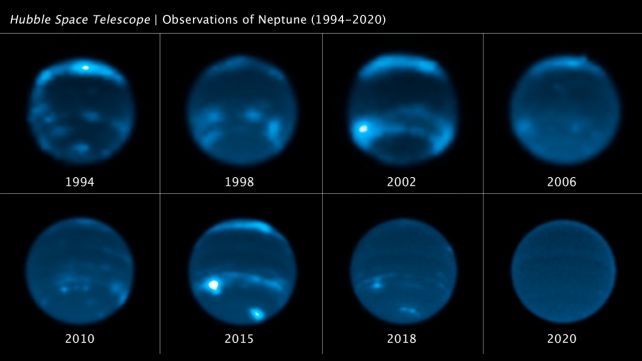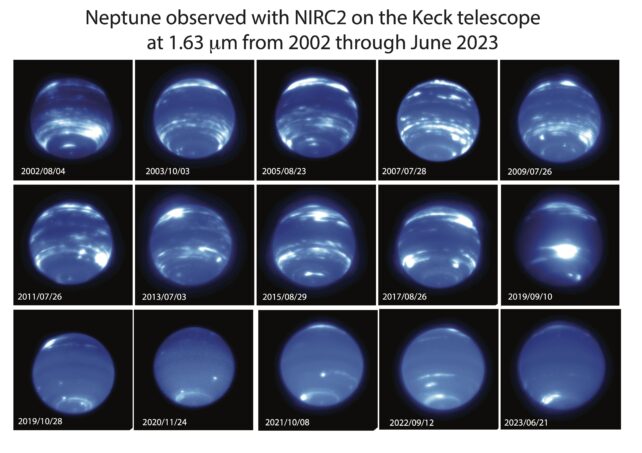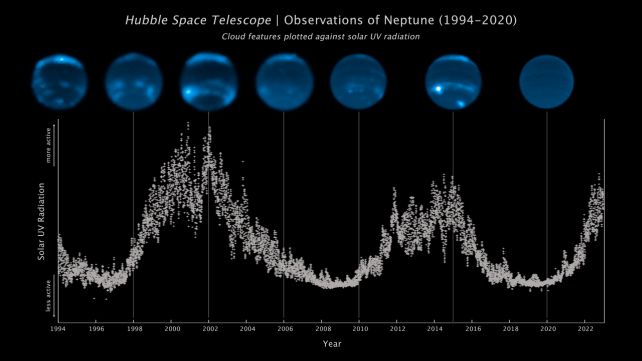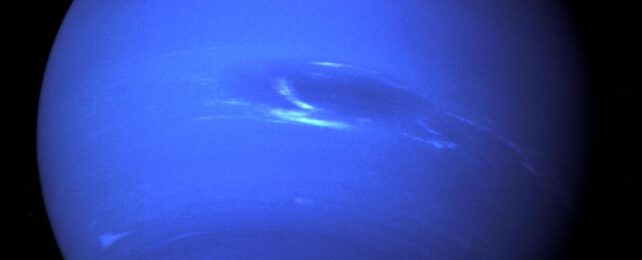Something very strange has happened to Neptune. In the last several years, the pale streaks of cloud that typically adorn its blue atmosphere have all but vanished.
Moreover, images dating back to 1994, when the Hubble Space Telescope first started documenting Neptune, show this isn't the first time this has happened. The fluctuations also seem linked to another periodic change – the 11-year activity of the solar cycle.
Given Neptune is from the Sun – about 4.5 billion kilometers, or just over 30 times the average distance between Earth and the Sun – this revelation has astronomers both surprised and intrigued.
And the most recent transformation has been especially dramatic. In 2019, the clouds at mid-latitudes started to fade. By 2020, the planet's appearance was more-or-less cloud-free.

"Even four years later, the images we took this past June showed the clouds haven't returned to their former levels," says astronomer Erandi Chavez of Harvard University, who was at UC Berkeley when she led the research.
"This is extremely exciting and unexpected, especially since Neptune's previous period of low cloud activity was not nearly as dramatic and prolonged."
Neptune is the most distant of the Solar System's major planets, and as a consequence is not as well studied or understood as some of Earth's closer neighbors. But the information we do have suggests a complicated and dynamic atmosphere, driven by processes we don't fully grasp.
Although studying it from afar is relatively limiting, it does allow for the identification of long-term atmospheric trends. Chavez and her colleagues focused their study on data that has been collected since 1994 by Hubble, since 2002 by the Keck Observatory, and by Lick Observatory in 2018 and 2019.

These combined datasets revealed that the amount of cloud cover on Neptune fluctuates over roughly 11-year cycles which seem to be synchronized with solar activity.
Roughly every 11 years, the Sun's magnetic field reverses polarity, marked by a peak in flares, coronal mass ejections, and sunspots. Once the poles switch places, the Sun grows quieter for a time, before amping up again to another solar maximum.
Leading up to its maxima, the Sun emits more intense ultraviolet light, irradiating the Solar System. The team's 29-year analysis shows that clouds start to appear on Neptune around 2 years after the powerful UV irradiation commences. There's also a positive correlation between Neptune's cloud cover and its albedo – that's the amount of sunlight it reflects.
"These remarkable data give us the strongest evidence yet that Neptune's cloud cover correlates with the Sun's cycle," says astronomer Imke de Pater of UC Berkeley.
"Our findings support the theory that the Sun's UV rays, when strong enough, may be triggering a photochemical reaction that produces Neptune's clouds."

The team's analysis, covering 2.5 solar cycles, shows Neptune's cloud cover and albedo peaked in 2002 (consistent with a previous study), before dropping to a low in 2007. From there, the cloud and albedo climbed again to a peak in 2015, before again subsiding. The two most recent solar maxima took place in 2001 and 2015.
However, while the results suggest some sort of photochemical goings-on, scientists are going to need to crunch some data to find out what those goings-on might be. For instance, one possibility of a UV interaction is a darkening, not a lightening, of clouds, which would lower albedo, not raise it. And storms from deep within Neptune would be unrelated to photochemically-induced clouds, which represents a complication.
Ongoing observations are taking place; and we have new data from the James Webb Space Telescope. Both are consistent with the team's findings heading into the next solar maximum, expected in 2025.
"We have seen more clouds in the most recent images, in particular at northern latitudes and at high altitudes, as expected from the observed increase in the solar UV flux over the past ~2 years," de Pater says.
Of course, it would be even better to send a spacecraft to study Neptune up close. But for the meantime, we'll have to make do.
The research has been published in Icarus.
